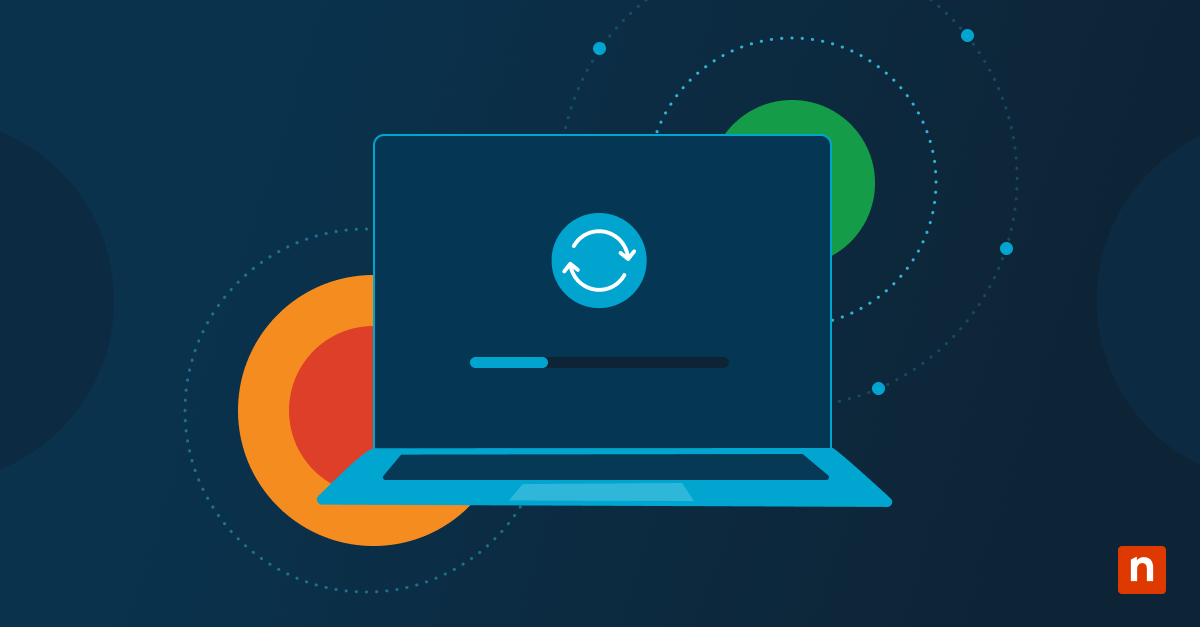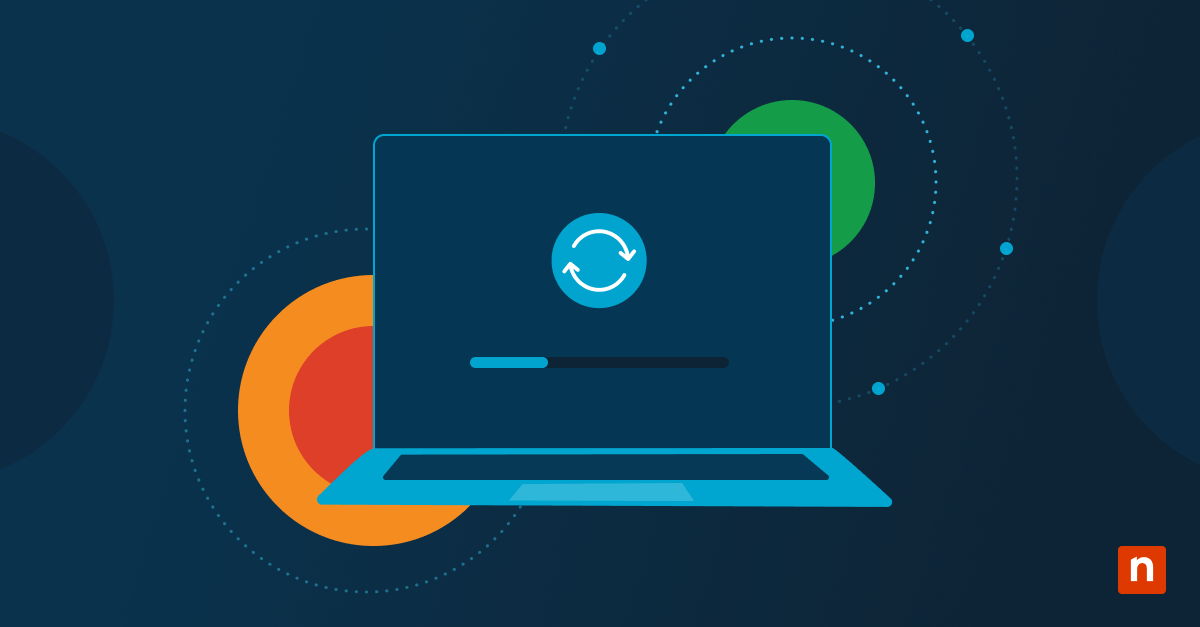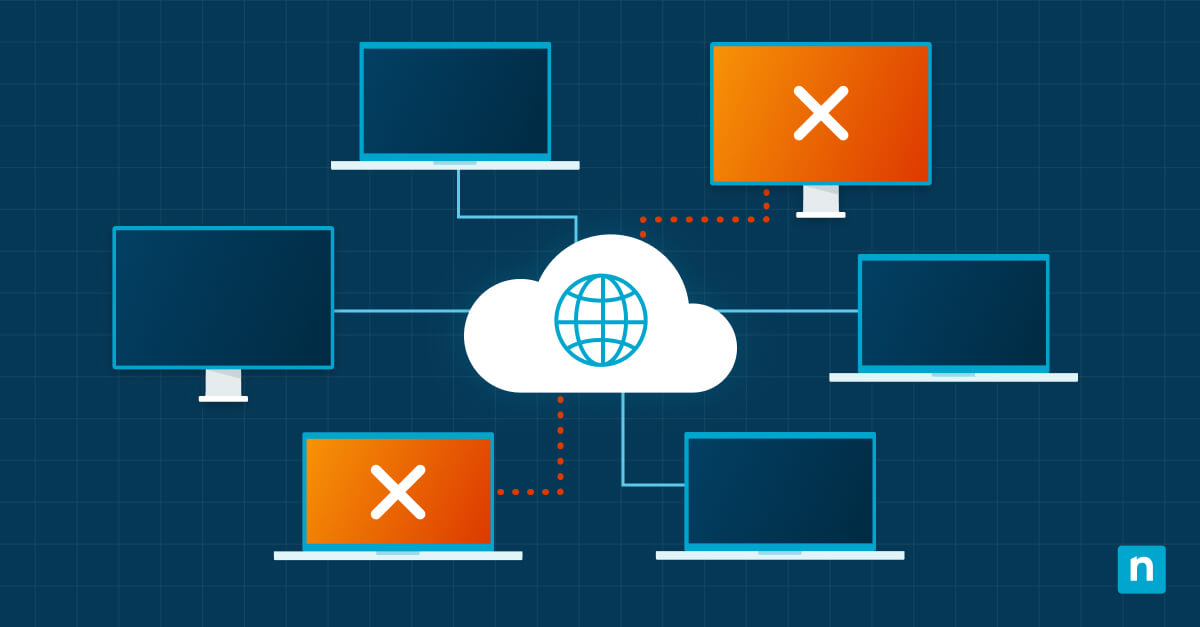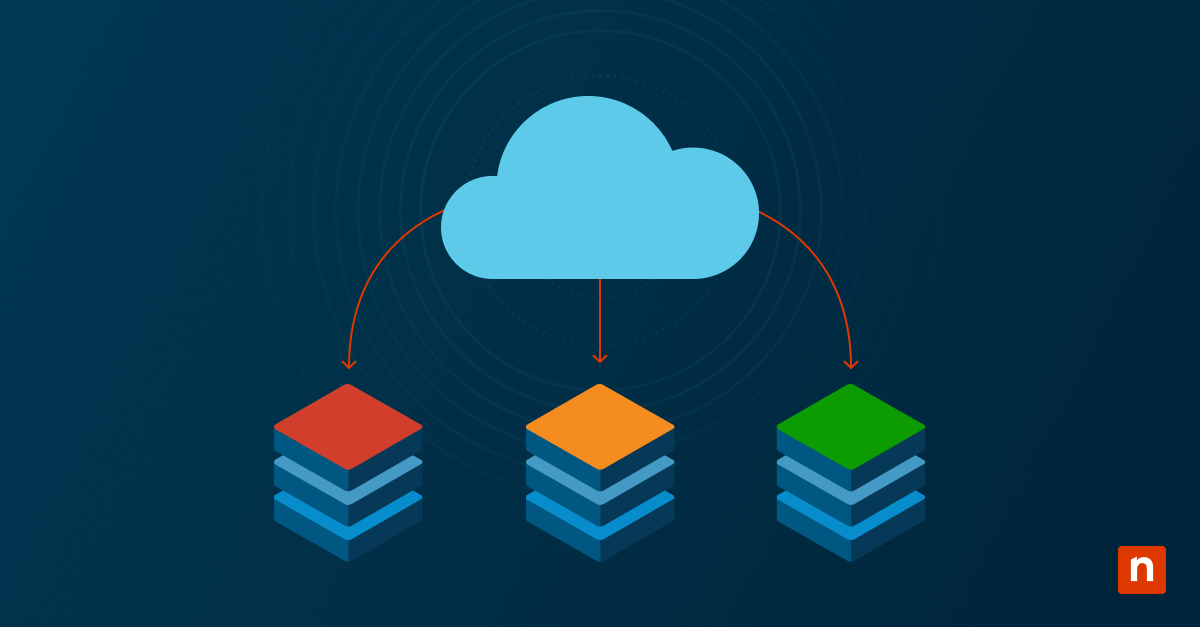Are you shopping around for ConnectWise Cloud Backup alternatives? Maybe you’re actively looking for a more user-friendly solution or simply window shopping for a better backup tool for your hybrid workforce. Whatever your reason, this guide details the top three alternatives based on genuine feedback from leading review sites, such as G2 and Capterra.
Discover NinjaOne SaaS Backup.
1. NinjaOne SaaS Backup
NinjaOne, the automated endpoint management software, is our top choice among ConnectWise Cloud Backup alternatives. The platform is trusted by 30,000+ customers worldwide for simplifying operations, strengthening security, and boasting a proven track record of improving IT efficiency within weeks of setup.
As part of its all-in-one IT management platform, NinjaOne offers two distinct but complementary backup solutions, NinjaOne Backup for endpoint devices and servers, and NinjaOne SaaS Backup for cloud productivity suites like Microsoft 365 and Google Workspace. This layered approach ensures MSPs and IT enterprises can protect both local and cloud-based data from accidental loss, ransomware, and misconfiguration (preventing you from having your own IT Horror Story!)—all managed from a single, intuitive dashboard.
What sets NinjaOne apart is its ability to unify backup with other critical IT functions such as patch management, monitoring, and remote management, reducing the need for multiple disjointed tools. By consolidating workflows into one platform, IT teams gain end-to-end visibility, faster recovery times, and greater consistency in enforcing backup policies.
5 reasons to choose NinjaOne SaaS Backup over ConnectWise Cloud Backup
1. Broader platform coverage
NinjaOne SaaS Backup protects both Microsoft 365 and Google Workspace environments, ensuring full coverage for businesses that rely on multiple productivity suites. This makes it a strong choice for hybrid or multi-platform organizations that need flexibility beyond Microsoft-only backups.
2. Granular recovery options
With NinjaOne, users can restore data at the individual file, folder, mailbox, or entire application level from an intuitive dashboard. This granular approach simplifies recovery workflows and minimizes downtime, helping IT teams respond quickly to both small-scale incidents and larger disruptions.
3. Unified IT management experience
Unlike standalone backup tools, NinjaOne SaaS Backup is part of the larger NinjaOne Platform, which consolidates endpoint, server, and SaaS management into a single-pane-of-glass. This integration helps MSPs and IT teams reduce tool sprawl, streamline workflows, and gain end-to-end visibility across their environments.
4. Compliance and retention support
NinjaOne SaaS Backup includes features like immutable backups, customizable retention policies, and support for frameworks such as HIPAA and GDPR. These compliance-focused capabilities make it easier for organizations in regulated industries to demonstrate data governance and prepare for audits.
5. Customer-first onboarding and support
NinjaOne offers free, unlimited onboarding, training, and customer support for life. MSPs and IT teams adopting SaaS backup can count on dedicated guidance, ensuring they get the most out of the platform from day one without long learning curves or added service costs.
Strengths of NinjaOne
- Reliable performance: Built for MSPs and enterprise IT environments, NinjaOne is engineered to deliver consistently high availability and fast recovery times.
- Designed to scale: NinjaOne is designed to scale efficiently without interruptions or performance bottlenecks. This is especially beneficial for growing MSPs or IT enterprises.
- Security-first architecture: NinjaOne employs multiple layers of enterprise-grade security, including encryption, role-based access controls, and secure authentication methods.
- Intuitive interface: The NinjaOne Platform features a clean, responsive design that minimizes ramp-up time and cognitive overhead.
- Customer-driven innovation: Guided by direct feedback from IT professionals and MSP leaders, NinjaOne maintains a transparent product roadmap and delivers frequent feature updates.
Customer story
Ron Thomas, Vice President of Technology at Rare, lauds NinjaOne for helping him and his team eliminate their costly IT stack with its all-in-one unified platform. With NinjaOne, Thomas says he not only improved the company’s security posture, but also helped deliver $100,000 estimated ROI.
“Having everything in NinjaOne’s single pane of glass, whether it’s our antivirus or Backup, helps us maintain global security. We have a tighter security posture, we can mitigate threats in real time, and we can go into ransomware recovery if needed because we have backups available,” shared Thomas. “Plus, we can pull reporting across all these systems, which enables us to better serve our customers.”
Read more NinjaOne customer stories or check out NinjaOne reviews.
Pricing information
NinjaOne’s IT management software has no forced commitments and no hidden fees. You can request a free quote, schedule a 14-day free trial, or watch a demo.
Reviews
NinjaOne G2 Reviews
- 2,765 reviews (at the time of writing)
- 4.7 / 5 stars
NinjaOne Capterra Reviews
- 265 reviews (at the time of writing)
- 4.7 / 5 stars
2. Druva Data Security Cloud
Druva Data Security Cloud is a cloud-native backup and data protection platform that helps organizations secure endpoints, SaaS applications, and hybrid workloads without the need for additional hardware or infrastructure. The platform consolidates backup, disaster recovery, and data governance into a single solution that scales globally.
It offers centralized visibility, automated policies, and compliance-ready storage to simplify data protection in modern IT environments. Because of these features, many ConnectWise Cloud Backup reviews cite Druva as a strong alternative, especially for enterprises and MSPs seeking a SaaS-first approach.
Features
- Endpoint & SaaS protection: Druva offers cloud-native backup for Microsoft 365, Google Workspace, and endpoints, ensuring coverage across user productivity platforms.
- Disaster recovery: It delivers fast, orchestrated recovery for critical workloads in the event of outages, ransomware, or accidental deletion.
- Compliance: Druva Data Security Cloud has built-in features that help IT teams align with regulatory frameworks while keeping data secure and accessible.
Shortcomings
- Latency: Druva requires stable internet connection to work. For organizations in remote or bandwidth-limited environments, this may be challenging.
- Performance: According to some G2 users, the platform may slow down when backing up older or larger data.
- Better suited for larger organizations: Organizations with larger backup needs may need to subscribe to a higher tier to use all the platform’s features.
Read more about the top Druva alternatives or compare NinjaOne vs Druva.
3. Veeam Data Platform
Veeam Data Platform is an enterprise-grade backup and recovery solution designed to protect virtual, physical, and cloud-based workloads. Known for its reliability, Veeam provides comprehensive data protection with features like instant recovery, ransomware resilience, and hybrid cloud support. The platform consolidates backup, monitoring, and orchestration tools, making it suitable for organizations with diverse IT environments.
By offering flexible deployment and broad workload coverage, Veeam is often included among the leading ConnectWise Cloud Backup alternatives for businesses seeking enterprise-class backup capabilities.
Features
- Hybrid workload protection: Veeam Data Platform safeguards virtual machines, physical servers, cloud workloads, and SaaS applications from a unified platform.
- Ransomware recovery: The platform offers immutable backups and instant recovery options to help organizations quickly recover from cyberattacks or data loss.
- Cloud mobility: Veeam enables workload portability and recovery across on-premises environments and major public cloud providers.
Shortcomings
- Clustered database environments: Some users have reported that Veeam Data Platform has limited support for clustered database environments, such as PostgreSQL/MySQL clusters.
- Set-up: The platform may be initially complex to set-up and configure.
- Learning curve: Several G2 users have stated that Veeam Data Platform has a steep learning curve.
Read more about the top Veeam alternatives or compare NinjaOne vs Veeam Data Cloud.
What is ConnectWise Cloud Backup?
ConnectWise Cloud Backup is an intelligent data protection solution built to safeguard Microsoft 365 environments, including Exchange Online, OneDrive, SharePoint, and Teams. The platform is designed for MSPs and IT administrators who need to ensure business continuity and meet compliance requirements in cloud-first workplaces. It offers automated, policy-driven backups that run multiple times daily, capturing emails, files, calendars, and collaboration data with minimal manual intervention.
ConnectWise Cloud Backup provides granular recovery options, enabling IT teams to restore individual items, folders, or entire applications as needed. From a single, centralized dashboard, users can monitor backup status, manage recovery workflows, and configure retention policies. The tool integrates with the broader ConnectWise ecosystem, giving service providers unified management across security, monitoring, and backup operations.
Researching the top ConnectWise Cloud Backup alternative
It’s worth noting that there is no one “best” backup solution for every organization. What might work best for your competitor may not necessarily work for your company. That is why we highly recommend taking advantage of the free trials offered by each solution listed. Likewise, it is a good idea to look for a solution that best aligns with your business needs and IT budget.
💡 Other useful references:








